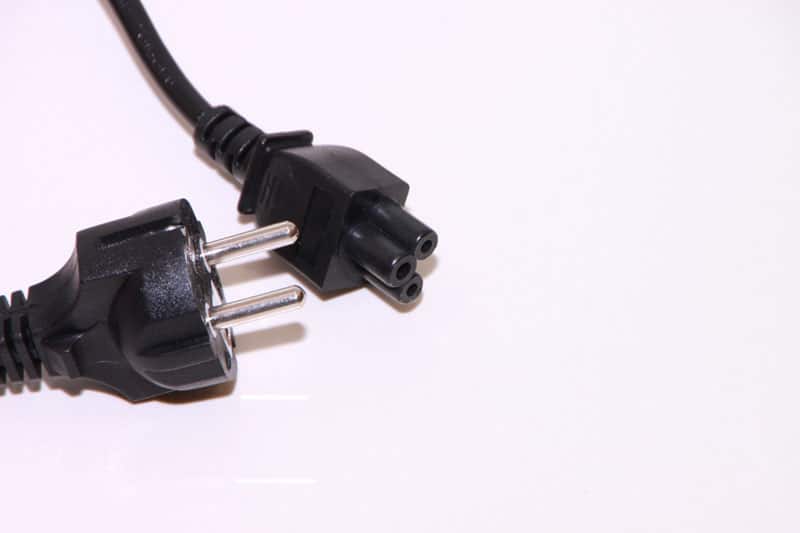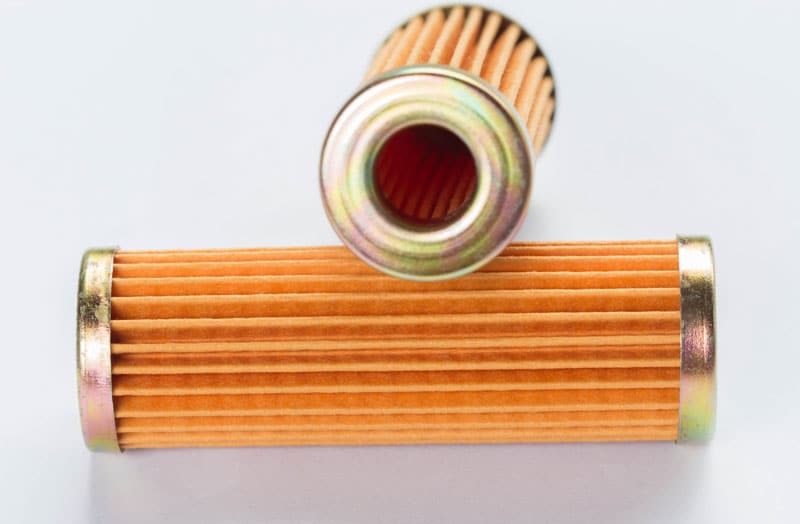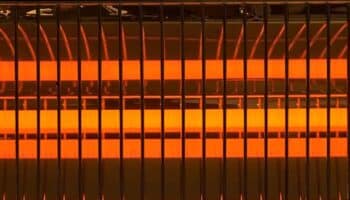Are you having trouble using your infrared heater?
There’s nothing more annoying than trying to enjoy your dinner outdoors, only to start feeling a little cold because your infrared heater stopped working.
Does this sound familiar? I’m very sorry to hear that. At this point, you’re probably wondering why this is happening, and whether there’s anything you can do to fix it.
Luckily, you’ve come to the right place for answers.
If your infrared heater isn’t working, chances are you have a damaged power cord, a failing wall outlet, or a broken thermostat. Having dirty filters or an obstructed grill could also explain the issue.
But, don’t worry, fixing these issues is easier than you think. Keep reading to learn how to do it!
Why Your Infrared Heater Isn’t Working?
There are different elements that may be keeping your infrared heater from working as it should. These are:
#1 A Damaged Power Cord

If you’ve ever stripped a power cord, you know that inside the rubber housing, there are multiple smaller cables that make it up. And while they’re not very fragile, they’re not indestructible either.
In fact, apparently unimportant bad practices, such as keeping your cord stored away improperly, tangled or pressed against a wall in a weird angle, is more than enough to cause permanent damage to it.
Depending on how broken the cord is, it could either supply no electricity, or supply it intermittently. The latter condition is much more concerning than the former, as it could lead your infrared heater to short circuit and overheat.
It is crucial that you stop using your appliance as soon as you suspect this to be the source of the problem.
Solution: Use a different cord.
On the off chance that you have spare cable lying around, use it to test whether this is, in fact, the issue. Doing so will save you time and money, as well as provide you with an immediate answer.
Just make sure it meets the same voltage and amperage requirements as the broken one.
Provided that you don’t have another one, that’s fine too. You can do a quick Google search on your heater’s make and model to find the right replacement at any online marketplace.
#2 A Failing Wall Outlet

Okay, so it’s not the cable. What’s next?
We check your wall outlet.
This is not an extremely common occurrence, but it’s been known to happen. Sometimes, either due to loose wires or other electricity-related problems, wall outlets can malfunction.
Diagnosing this situation can be a little tricky, as the signs of it are very similar to those of overheating and short-circuiting.
It might seem like a faulty wall outlet is not a big deal, but trust me, it is. Just as it happens with your power cord, depending on the severity of the malfunction, it could be supplying your infrared heater with intermittent bursts of electricity.
If your infrared heater is not turning on or working, this could be the reason why.
Solution: Carefully unplug your heater, and let it cool down completely.
Once you have done that, take it to a different section of your house, and plug it back into a different outlet. Preferably, as far away from the one you normally use, as possible.
Now, this will only work if you own a portable model. Provided that your heater is wall-mounted, the outlet will be behind your wall, and it’s best to let a certified electrician take a look.
If you want a DIY challenge, and own a multimeter, you can use it to test the suspicious outlet for continuity. This is optional, but strongly advised, as a faulty outlet could be the first sign of a greater malfunction in your home’s electrical layout.
#3 A Broken Thermostat
Provided that all your electrical sources are unscathed, we can safely move on to considering a faulty thermostat.
In case you’re not familiar with what this component does, let me briefly explain. Your thermostat is responsible for both measuring and regulating the temperature inside your infrared heater.
This part is what prevents overheating and adjusts the appliance’s temperature to your desired settings.
When it works normally, you should not experience any issues. However, any kind of malfunction could trick the component into thinking your unit is overheating, and prompt it to shut off automatically to protect it.
If, no matter what you do, your infrared heater won’t work or stay on, there’s a very good chance that you need to replace the thermostat.
Solution: The process for different infrared heaters might vary, but the broad strokes should be the same for all of them:
- Carefully unplug the appliance, and let it cool down completely
- Turn the unit around and expose the protective screws at the back
- Undo them, and remove the external metal panel to expose your machine’s guts
- Locate your thermostat, and gain comfortable access to it
- Use a multimeter to test it for continuity
Should you get null readings on the meter, the part is dead, and needs to be replaced.
#4 Dirty Filters

A lot of people always ask me what’s the point of having an air filter inside a heating appliance.
And the answer is simple. To protect it from harmful particles.
While your infrared heater will not pull in air like a dehumidifier would, it’s still in constant contact with the outside world, which renders it vulnerable to pollutants, and other potentially harmful elements.
The air filter inside your appliance protects its internal components from the aforementioned, and allows it to operate normally. But, when it becomes obstructed by dirt and debris, it can overheat. This may explain why your infrared heater won’t work.
Having this happen a couple of times won’t do much damage, but if you let it occur often, your thermostat could fail, and keep the unit from heating in the future.
If your infrared heater won’t heat, even when set to the highest settings, there’s a good chance your dirty air filter killed your thermostat.
Solution: Ideally, you want to clean your filter every month, and replace it every six months.
To clean it, carefully remove it from your infrared heater, place it under running water, and apply dish soap. Once you have done that, let it dry completely, and vacuum off any residue.
This will only work on filters that are newer than 6 months, though. No matter how well you clean your filter, if it’s older than that, it will never work normally again, and you’ll have to get a new one.
#5 An Obstructed Grill
Lastly, let’s talk about your grill.
This part of your infrared heater is designed to protect you from potential burns by accidentally touching the heat source. However, if you let it get too dirty, it can start causing more problems than it solves.
Excessive amounts of dirt or debris on the grill can make it difficult for your unit to disperse heat adequately, causing most of it to remain inside the heater. This may be the reason your infrared heater isn’t working.
This can quickly lead to overheating and automatic deactivation.
It is of the utmost importance that, if you suspect this to be the source of the problem, you give your grill a good cleaning.
Solution: Imagine you’re about to cook a burger on your grill, and clean it accordingly.
On a more serious note, though, you should clean your grill at least once a month with a rag to remove dirt from it. If you encounter stubborn residues, you can always use vinegar to soften them up and scrub them off.
Please make sure the appliance is unplugged and cool before doing so.
What to Do if Your Infrared Heater Won’t Turn On
If your infrared heater won’t turn on, chances are your device is not getting enough power supply. This can easily happen if your power cord and outlet are damaged.
But, don’t worry. As we mentioned before, solving these issues is as simple as unplugging your infrared heater, waiting until it cools down, and plugging it back into another wall outlet. Moreover, try using a different power cord.
If you’ve tried the steps above, but your infrared heater is still not turning on, please check your guarantee and call the manufacturer. You can also try resetting your device (more details below).
How Do You Reset an Infrared Heater?
There’s no point in tampering with an appliance that might just need to be reset. Sometimes, electrical interference or a bug in the circuit board can cause your infrared heater to stop working normally.
Depending on your model, your appliance might have a dedicated reset button, but if it doesn’t, unplugging it, and plugging it back in after a couple of minutes, should do the trick.
Do Infrared Heaters Wear Out?
If you were wondering whether infrared heaters can wear out, the short answer is yes. However, the rate at which this happens will depend greatly on the frequency of use, and the type of infrared heater that you own.
Some models can last as little as 10,000 hours, while some others can go all the way up to 100,000. If you suspect your appliance has been running for longer than that, it might be time to consider buying a new one.
Conclusion
To have your infrared heater stop working is… inconvenient, to say the least. Whether it’s not heating up, turning on, or staying on, you’ll have to find a way to fix it as quickly as possible.
Fortunately, as I hope you’ve learned in this piece, addressing most of the causes behind this problem is simple, and quick. More often than not, replacing your power cord, and cleaning your grill often, will do the trick.
Thank you for reading. If you found this article helpful, why not become an expert in the subject through our other incredible resources below?






